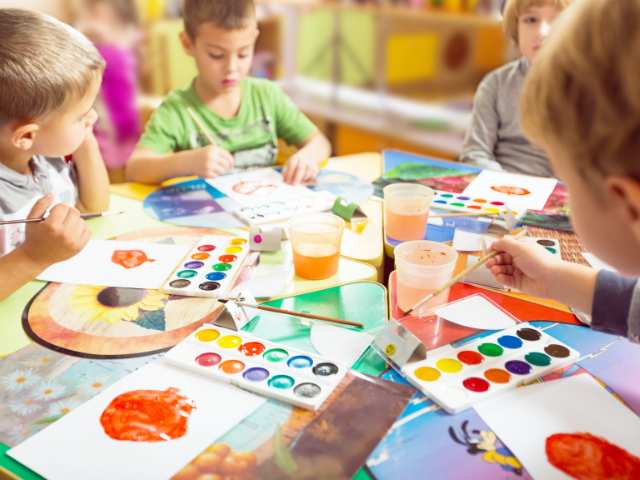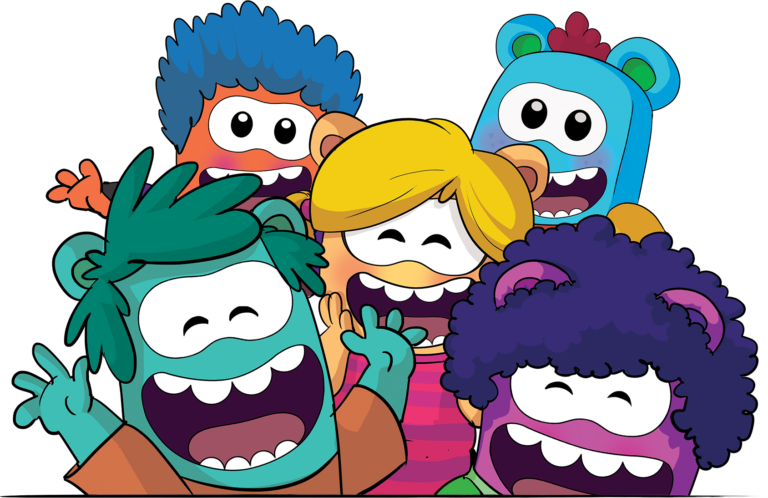Creativity is the cornerstone of innovation, problem-solving, and personal growth. As parents and educators, fostering creativity in children aged 3 to 8 is a vital responsibility. During these formative years, young minds are like sponges, absorbing everything around them. Cultivating their creativity not only enhances their cognitive development but also sets the stage for a lifetime of innovative thinking. In this article, we will explore effective strategies for nurturing creativity in children between the ages of 3 and 8.
1. Encourage Play-Based Learning
Play is a child’s natural language, and it serves as a powerful tool for fostering creativity. Through play, children can explore their imaginations, develop problem-solving skills, and learn to express themselves. Provide them with a variety of open-ended toys such as building blocks, art supplies, and pretend-play props. These materials allow children to engage in unstructured play, giving their creativity free rein.
Consider incorporating activities like role-playing, storytelling, and imaginative games into their daily routine. This not only stimulates their creativity but also enhances social and emotional development. By engaging in play-based learning, children can experiment, make decisions, and learn from their experiences.
2. Create a Supportive Environment
The physical and emotional environment plays a crucial role in nurturing creativity. Ensure that the spaces where children spend their time are conducive to exploration and self-expression. Designate a dedicated art corner with easy access to various art supplies. Having a diverse range of materials such as paints, colored paper, glue, and markers allows children to express themselves in different ways.
Additionally, foster a positive emotional environment by encouraging risk-taking and embracing mistakes as part of the learning process. Children should feel comfortable expressing their ideas without fear of criticism. Celebrate their efforts, focusing on the process rather than the end result, to instill a sense of accomplishment and encourage a growth mindset.
3. Integrate Nature into Learning
Nature serves as a limitless source of inspiration for young minds. Outdoor activities not only promote physical health but also stimulate creativity. Take children on nature walks, encourage them to observe plants and animals, and engage in activities like collecting leaves or rocks. Nature-based experiences provide a multisensory learning environment, sparking curiosity and creativity.
Consider setting up an outdoor art station where children can create masterpieces using natural materials. This connection with nature not only nurtures creativity but also instills a sense of wonder and environmental stewardship.
4. Foster Curiosity Through Storytelling
Storytelling is a powerful tool for igniting imagination and creativity in young children. Reading books together opens up a world of possibilities, transporting children to different times and places. Encourage them to create their own stories or make up alternate endings to existing ones. This not only enhances language skills but also fosters creativity by allowing children to envision new possibilities.
Additionally, consider introducing various forms of storytelling, such as puppet shows, role-playing, or digital storytelling apps. These activities not only captivate children’s interest but also provide them with different avenues for self-expression.
5. Support Divergent Thinking
Divergent thinking is the ability to generate a wide range of ideas and solutions. Encourage children to think beyond conventional boundaries by posing open-ended questions that stimulate their creativity. For example, instead of asking, “What color is the sky?” you might ask, “If the sky could be any color, what color would you choose and why?”
Engage in activities that promote divergent thinking, such as brainstorming sessions, creative problem-solving games, and collaborative projects. By fostering a mindset that values diverse perspectives and unconventional ideas, children develop the confidence to think creatively and innovatively.
6. Provide Opportunities for Artistic Expression
Artistic expression is a powerful avenue for nurturing creativity in children. Offer a variety of art materials and techniques, allowing them to experiment with different textures, colors, and forms. Encourage self-expression through drawing, painting, sculpting, and other artistic activities.
Create a gallery space to display their artwork, fostering a sense of pride and accomplishment. Support their creative endeavors by asking open-ended questions about their creations, helping them articulate their thoughts and ideas. By providing opportunities for artistic expression, you empower children to communicate and explore their inner worlds.
7. Incorporate Music and Movement
Music and movement are integral components of a well-rounded creative education. Introduce children to a diverse range of musical genres and encourage them to express themselves through dance and movement. Musical instruments, rhythm games, and dance activities enhance their sensory experiences and stimulate creativity.
Consider organizing music and movement sessions where children can explore different sounds and movements. This not only promotes physical coordination but also nurtures a love for self-expression through the arts.
8. Model Creativity
Children learn by example, and parents and educators serve as powerful role models. Demonstrate your own creativity by engaging in artistic activities, problem-solving, and embracing new ideas. Share your experiences of trying new things, making mistakes, and learning from them.
Create a culture of curiosity within the family or classroom by engaging in joint creative activities. Collaborate on art projects, explore new hobbies together, and demonstrate that creativity is a lifelong journey. By modeling a creative mindset, adults inspire children to view challenges as opportunities for growth and exploration.
Nurturing creativity in children aged 3 to 8 is a multifaceted and enriching process that involves creating a supportive environment, encouraging play-based learning, and fostering a love for the arts. By embracing the innate curiosity and imagination of young minds, parents and educators play a pivotal role in shaping the future innovators, problem solvers, and creative thinkers of tomorrow. Through a combination of intentional activities, a positive emotional environment, and the power of example, we can cultivate the seeds of creativity in our children, allowing them to flourish and thrive in a world that values imagination and innovation.
Welcome to AppyKids. We are a dedicated team of designers, developers, artists, and storytellers committed to crafting exceptional educational content for preschool children. Our unique learning approach, known as PRESENT-PRACTICE-PLAY, has been developed in collaboration with educational experts to ensure an effective and enjoyable learning experience.
While our primary focus is on enriching the lives of children, we also offer valuable resources for parents and teachers. Our portfolio includes award-winning apps, interactive worksheets, and educational videos designed to engage and educate. Join the AppyKids community, where we make learning feel like an adventure.
Check out our Youtube Channel – a safe, exciting, meaningful place for your child.

